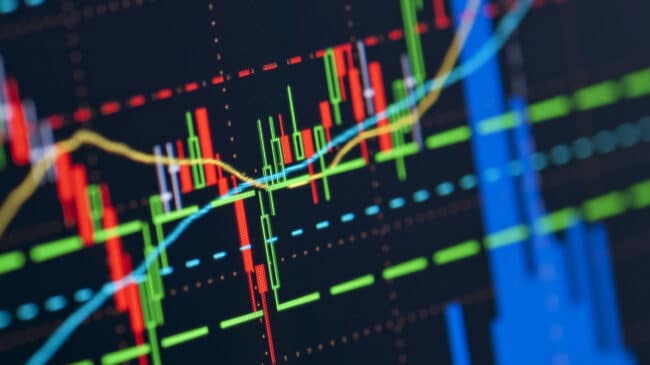Standard and Poors (S&P) Global recently published its yearly outlook for public pension funds, which outlined the various factors that are helping pension systems today but may potentially hinder pension funds going forward.
2021 Pension Investment Returns
The S&P report revealed that the average investment return for public pension funds was 30% in the 2021 fiscal year. This resulted in the average reported funded status for pension plans increasing from 71% to 84%. The impressive jump in funded ratios has been followed by many public pension plans making actuarial adjustments, such as lowering their expected investment return rates to 7.0% on average. These assumed investment return rate reductions are likely to continue, bringing with them higher contributions from governments.
Pension funds seem to be well aware that the investment returns in 2020-2021 were an outlier, as pension boards have continued to lower their assumed rates of investment returns even after the investment results from the past year hit their books.
Many pension funds are still trying to explore high reward, but risky, alternative assets like private equity, hedge funds, and more recently, cryptocurrencies and special purpose acquisition companies (SPACs).
Since public pension benefits are guaranteed and usually backed by state law, pension funds would be better off continuing to downgrade investment return expectations, as they are now, while also pursuing a less volatile portfolio to build on the incredible momentum from 2021 rather than continuing to flirt with risky assets.
Inflation
Inflation rose to a 30-year high of 7% in December 2021 but according to the report, there are limited short-term implications for pension debt. However, S&P finds that if inflation persists, public pension costs could sharply increase for a couple of reasons.
First is that some pension plans provide a cost-of-living adjustment (COLA) that is attached to actual inflation metrics, meaning higher sustained inflation triggers a higher COLA amount than was planned for.
Second, salary increases will generally have to be higher to keep up with inflation, thereby increasing pension benefits which are typically based on a public worker’s highest three-to-five years of earnings.
Prolonged inflation means that future pension benefits could increase on two fronts – higher base benefits due to higher salaries than were previously accounted for, and an increased benefit growth rate from increased cost-of-living adjustments.
The potential silver lining to prolonged higher inflation could be that discount rates could rise if inflation at these levels persisted, thereby increasing funded ratios. But given how much pension benefits would be increased, it is not yet clear whether this would be a net positive or negative for pension funds.
Pension Obligation Bonds
With interest rates remaining low, the issuances of pension obligation bonds (POB) have been increasing for the last few years in the United States. With inflation now a concern, the Federal Reserve is considering interest rate hikes in the near future that may make this option less appealing and slow the trend.
S&P Global published a report last year showing that POBs saw a massive spike during the COVID-19 pandemic, doubling to more than $6 billion in bonds issued in 2021. The driver of this was the increased spread between those bond yields and treasuries which S&P Global says is not free money while noting: “[I]t indicates increased exposure to market volatility risk when proceeds are deposited in the pension trust.”
That being said, the S&P Global report also noted that POBs can be helpful as a part of larger pension reform but should also not be used as a short-term fix.
Demographic Impacts
Mortality rates, as one would expect, were unusually high the last few years due to the COVID-19 pandemic. The Centers for Disease Control and Prevention reported a drop in life expectancy of nearly two years in 2020, which was expected to continue through 2021. S&P says these trends could result in reduced liabilities for pension plans as expected lifetime benefits could end up being lower than expected.
Another aspect of the pandemic has been the rise in early retirements. Many people may opt to retire early if they feel the health exposure risk is not worth continued work. Early retirement is part of a larger phenomenon of the so-called ‘Great Resignation,’ which comprises all age groups and goes well beyond just early retirement. The impact of early retirements on public pension funds remains unclear since many plans do have penalties associated with early retirement and no one is sure how long this trend will continue. However, it is something pension funds should note and continue to watch.
Slower Payroll Growth
Finally, the S&P Global report discusses how employment and pay changes could impact pension funds in the short and long term. The National Association of State Retirement Administrators reports that since Feb. 2020, state and local governments shed nearly a million jobs, most of which they have not rehired for.
The slower payroll growth from state and local governments is crucial because they usually base their contribution rates on a certain percentage of payroll. If payroll growth slows and falls below actuarial expectations, contributions that they expected to be there in the future will not exist, potentially backloading significant levels of costs or unfunded liabilities. If payroll trends stay consistently lower than previously thought, then governments should lower their payroll assumptions and adjust contributions accordingly.
In short, S&P recognizes that most public pension funds had a spectacular 2021 and many have built on that momentum with key adjustments to their return rate assumptions. But many market experts are warning that factors such as inflation, rising interest rates, and slower payroll growth could derail public pension systems’ funding progress. These challenges can be mitigated, but policymakers should respond with needed pension policy reforms sooner rather than later.
Stay in Touch with Our Pension Experts
Reason Foundation’s Pension Integrity Project has helped policymakers in states like Arizona, Colorado, Michigan, and Montana implement substantive pension reforms. Our monthly newsletter highlights the latest actuarial analysis and policy insights from our team.

